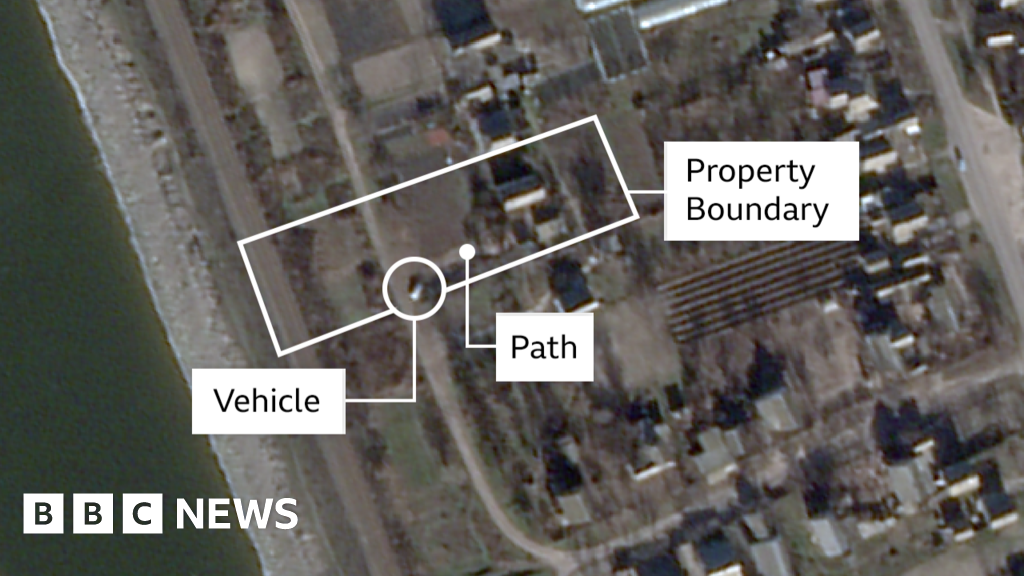Rising sea levels could plunge more than 100 million buildings underwater by 2100, scientists have warned.
The experts in Canada estimated how many buildings in Africa, Southeast Asia and Central and South America would be flooded by different sea level changes.
Their assessment found that sea level rises of just 1.6 feet (0.5 metres) would flood three million buildings in the global south alone.
However, if emissions aren't curbed soon, sea levels could rise by over 16 feet (five metres) in the next century - putting up to a sixth of all buildings in the global south at risk.
Worryingly, the researchers at McGill University in Montreal say that much of this destruction is now practically unavoidable.
Even if the terms of the Paris Agreement are met, sea level rises of up to three feet (0.9 metres) will likely flood five million buildings by the end of the century.
Co-author Professor Natalya Gomez says: 'Sea level rise is a slow, but unstoppable consequence of warming that is already impacting coastal populations and will continue for centuries.
'People often talk about sea level rising by tens of centimetres, or maybe a meter, but in fact it could continue to rise for many meters if we don't quickly stop burning fossil fuels.'
Scientists have used satellite maps to work out how many buildings would be destroyed if sea levels rise between 0.5 metres (red) and 20 metres (yellow). In the worst-case scenario, over 100 million buildings would be flooded in the global south alone
The researchers focused their analysis on the Global South - the bottom half of the world comprising Africa, Southeast Asia and Central and South America - but they've created a map showing what flooding would look like worldwide.
In their first large-scale, building-by-building assessment of its kind, the researchers combined high-resolution satellite information and elevation data.
Using this, they were able to estimate how many buildings would be inundated under various sea level scenarios, from increases of 1.6 feet (0.5 metres) up to 65 feet (20 metres).
As the climate warms, sea levels rise due to the melting of polar ice sheets and glaciers, as well as the fact that water in the oceans expands as it heats up.
Scientists currently believe that 1.6 feet of sea level rise will occur even if governments around the world take rapid measures to cut greenhouse gas emissions.
When this occurs, the researchers predict that millions of buildings will be permanently plunged underwater, with many more placed within the high tide mark.
The researchers' flooding map shows that large parts of UK coastal towns, such as Great Yarmouth, will be permanently underwater, while massive areas of cities like London will be beneath the high tide mark.
In London, tidal flooding will extend as far as Peckham in the south and Barking in the north.
If immediate action is taken to curb emissions, sea levels will rise by just 1.6 feet (0.5 metres). However, this will already put large parts of London under the high tide mark
Under the best-case scenario of 1.6 feet (0.5 metres) of sea level rise, entire towns in the Northeast could be submerged during high tide
Even if the world makes good on its commitments under the Paris Agreement to reach net-zero by 2050, studies predict sea levels will still rise by three feet (0.9 metres) by 2100. This will put large areas of London underwater. Pictured: artist's impression of London underwater
Co-author Professor Jeff Cardile says: 'We were surprised at the large number of buildings at risk from relatively modest long-term sea level rise.
Even if the world makes good on its commitments under the Paris Agreement to reach net-zero by 2050, studies predict sea levels will still rise by three feet (0.9 metres) by 2100 and by 8.5 feet (2.5 metres) by 2300.
That means a further five million buildings are expected to be below the high tide mark by the end of the century, increasing to 20 million by 2030.
However, scientists predict that global sea levels could rise by as much as 16 feet (five metres) to 65 feet (20 metres) if the world doesn't reach net zero soon.
If the sea level becomes 16 feet higher, the researchers estimate that 45 million buildings in Africa, Southeast Asia and Central and South America alone will be flooded.
That number rises to a staggering 136 million buildings if sea levels are allowed to rise by 65 feet.
In this absolute worst-case scenario, entire regions of the UK would be completely swallowed by the waves.
Cambridge, Peterborough, York, Hull, and even Doncaster would be permanently underwater.
In the worst-case scenario, large parts of England, and almost the entirety of the Netherlands, will be permanently underwater
Many of the towns worst affected by flooding will be extremely densely populated areas like Natal, Brazil. The disruption caused by the flooding will damage global food networks as ports are submerged
Meanwhile, large parts of major towns and cities such as Liverpool, Cardiff, Bristol, Glasgow and London would be submerged while high tides would reach the outskirts of Manchester and Leeds.
Globally, the effects would be disastrous, especially for poorer countries with less ability to mitigate or adapt to the effects of flooding.
An estimated 30 per cent of the global population lives within 31 miles (50 km) of the coast, and 20 of the 26 largest megacities are located on the coast.
Additionally, many of the areas this study predicts will be flooded are densely populated, low-lying areas.
This means that entire neighbourhoods, including critical infrastructure, ports, refineries, and cultural sites, will be affected.
That means the impacts of global sea level rise will extend well beyond the areas actually submerged by water.
Professor Eric Galbraith, another study co-author, says: 'We all rely on goods, foods and fuels that pass through ports and coastal infrastructure exposed to sea level rise.
'Disruption of this essential infrastructure could play havoc with our globally interconnected economy and food system.'
GLACIERS AND ICE SHEETS MELTING WOULD HAVE A 'DRAMATIC IMPACT' ON GLOBAL SEA LEVELS
Global sea levels could rise as much as 10ft (3 metres) if the Thwaites Glacier in West Antarctica collapses.
Sea level rises threaten cities from Shanghai to London, to low-lying swathes of Florida or Bangladesh, and to entire nations such as the Maldives.
In the UK, for instance, a rise of 6.7ft (2 metres) or more may cause areas such as Hull, Peterborough, Portsmouth and parts of east London and the Thames Estuary at risk of becoming submerged.
The collapse of the glacier, which could begin with decades, could also submerge major cities such as New York and Sydney.
Parts of New Orleans, Houston and Miami in the south on the US would also be particularly hard hit.
A 2014 study looked by the union of concerned scientists looked at 52 sea level indicators in communities across the US.
It found tidal flooding will dramatically increase in many East and Gulf Coast locations, based on a conservative estimate of predicted sea level increases based on current data.
The results showed that most of these communities will experience a steep increase in the number and severity of tidal flooding events over the coming decades.
By 2030, more than half of the 52 communities studied are projected to experience, on average, at least 24 tidal floods per year in exposed areas, assuming moderate sea level rise projections. Twenty of these communities could see a tripling or more in tidal flooding events.
The mid-Atlantic coast is expected to see some of the greatest increases in flood frequency. Places such as Annapolis, Maryland and Washington, DC can expect more than 150 tidal floods a year, and several locations in New Jersey could see 80 tidal floods or more.
In the UK, a two metre (6.5 ft) rise by 2040 would see large parts of Kent almost completely submerged, according to the results of a paper published in Proceedings of the National Academy of Science in November 2016.
Areas on the south coast like Portsmouth, as well as Cambridge and Peterborough would also be heavily affected.
Cities and towns around the Humber estuary, such as Hull, Scunthorpe and Grimsby would also experience intense flooding.
 (1).png)
 1 week ago
6
1 week ago
6

















